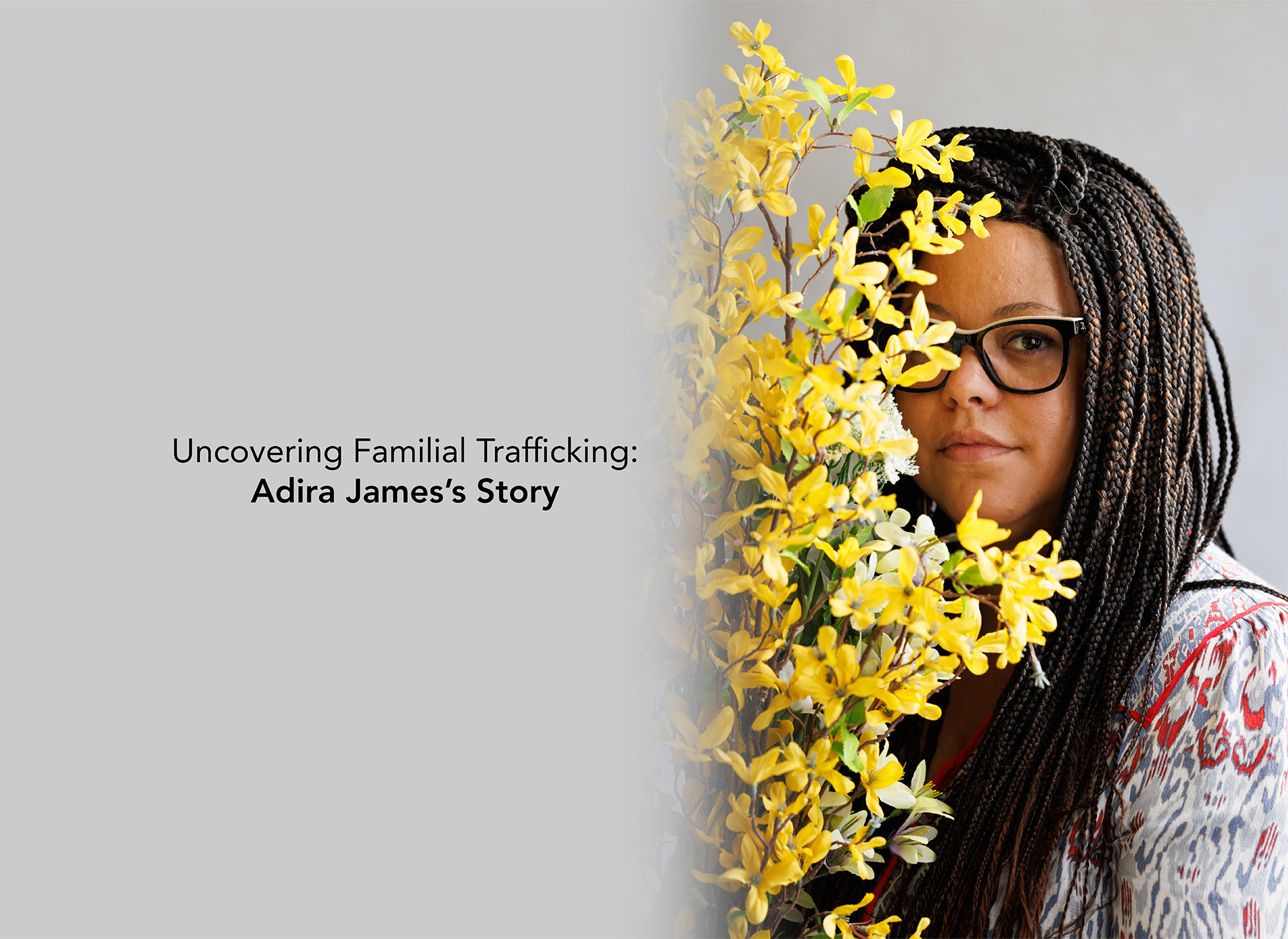“I've had 11 surgeries directly related to the trafficking, including scar tissue removal.” – Adira James
Adira James is a self-published author, who shares her story of survival and resilience in the memoir "What They Couldn't Take: A Memoir of Survival from Familial Sex Trafficking." Through her journey, Adira brings attention to the lesser-known issue of familial trafficking.

Cover of "What They Couldn't Take"
Now in her thirties, Adira recently sat down with the National Center for Missing & Exploited Children to discuss the abuse she endured as a young child. Adira said her parents began sexually abusing and trafficking her to their friends and business partners when she was just two years old. The horrifying abuse happened frequently for more than 10 years.
Adira explained that because the abuse began at such a young age, it was her normal. “I didn't know any different. I didn't know. And I was never given an option to tell anybody about it. So really, I was lucky I got to go to school at least. So I was out of the house a bit, but that was about it.”
Sex trafficking is abuse that occurs when a child under 18 is advertised, solicited, or exploited through a commercial sex act. Although similar in nature, familial trafficking differs from other types of trafficking in that it involves a child being trafficked by a relative or someone perceived by the child to be a family member but is not directly related to the child.
“I think the main difference between trafficking by a stranger and being trafficked by a family member is you are constantly in the abusive environment,” explained Adira. “You're tied to those people for the rest of your life.”
Melissa Snow, executive director of NCMEC's Child Sex Trafficking Programs, not only echoed Adira's sentiments but also extended them. “Some of the important components about familial trafficking that are different from pimp-controlled trafficking is the age the abuse starts,” Snow added. “In one form of familial trafficking the commercial sexual exploitation often begins as a toddler or early, prepubescent childhood.”
According to one study conducted by the International Organization for Migration (IMO) and the State Department, approximately 41 percent of child trafficking cases (both sex and labor) involve a family member acting as the trafficker: https://www.state.gov/navigating-the-unique-complexities-in-familial-trafficking/.

Illustration by Carol Summers
The term “familial trafficking” on NCMEC's website has proven to be a powerful tool in helping victims and survivors, like Adira, understand their specific form of victimization and connect with other survivors who have had similar experiences.
“It was like getting a correct diagnosis,” said Adira. “I think having that [familial] definition will empower survivors to have a better understanding of themselves. And to speak out or get help.”
Snow said, “It’s so important that anti-trafficking organizations include all forms of child sex trafficking in their trainings and materials. When we only talk about or focus on a specific form of trafficking, we can cause misidentification or, even worse, a complete lack of identification because what people are seeing does not fit the expected narrative. Also, it can make victims feel invisible and very isolated in their experience.”
Child sex trafficking by family members is often underreported due to victims feeling obligated to remain loyal to their abusers. This obligation often stems from normalized abuse from a young age and coercion tactics that make it difficult to speak out.
“Adults really need to pay attention because for familial trafficking victims, teachers and medical staff are the first line of defense,” said Adira. “I went to school throughout my entire trafficking situation. I felt like they should have picked up on signs from me like malnutrition, unexplained absences, lack of understanding of how to interact or play with kids my own age, constant bruises, and marks.”
Adira said the sexual abuse ended when she was 12 with a pregnancy and forced abortion. However, during her teenage years, without any services or support and still living in the home with her abusers, her desperate attempts to manage her trauma looked like an out-of-control teenager. She turned to alcohol, drugs, and self-harm to try to survive.
Today, Adira is in a much better place.
Even though it has been more than 20 years since the trafficking ended, there is one part of the abuse that still continues to this day.
She told NCMEC the photos and videos her father took of her while she was being trafficked are still out there.
“It doesn't end and it's, it's like a piece of you gets taken during the abuse and then another piece gets taken with the pictures being taken or the video, and then they're still using it.”

Photo Credit: Lisa Tune Photography
Adira hopes her book, compiled of poems, works of art, and letters she wrote as a young girl to cope with the abuse and in her words “survive” will help others.
“I want them to feel validated and have some hope. I want people to get a better idea of familial sex trafficking and how it can affect somebody's life.”
Prevention, education, and intervention are key to keeping children safer. If you are concerned about potential child sex trafficking activity, please make a report to NCMEC’s CyberTipline or call 1-800-THE-LOST.
To read more about trafficking, please visit https://www.missingkids.org/theissues/trafficking.
